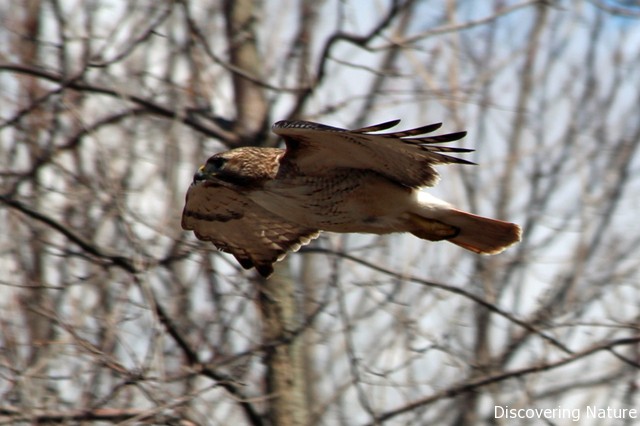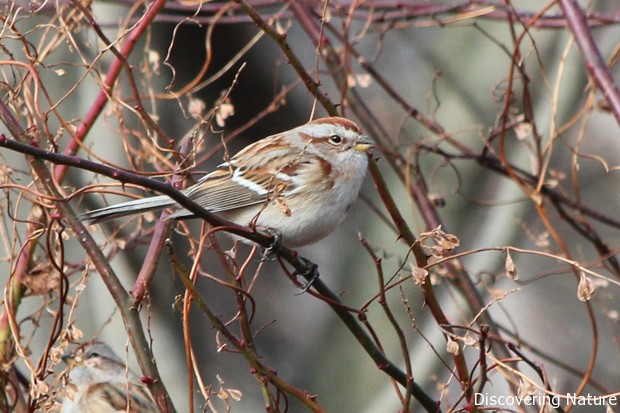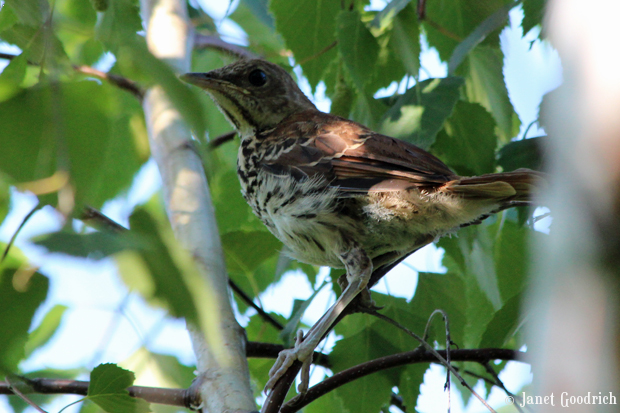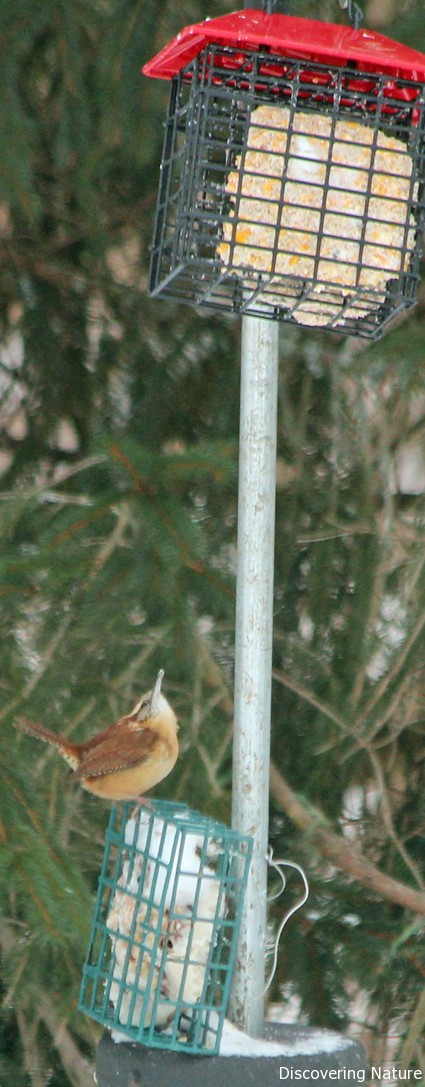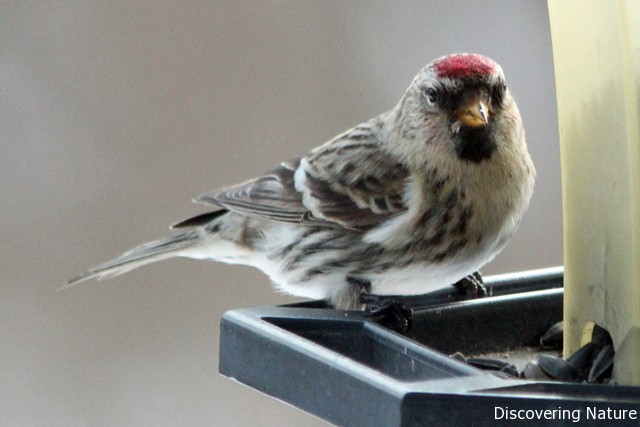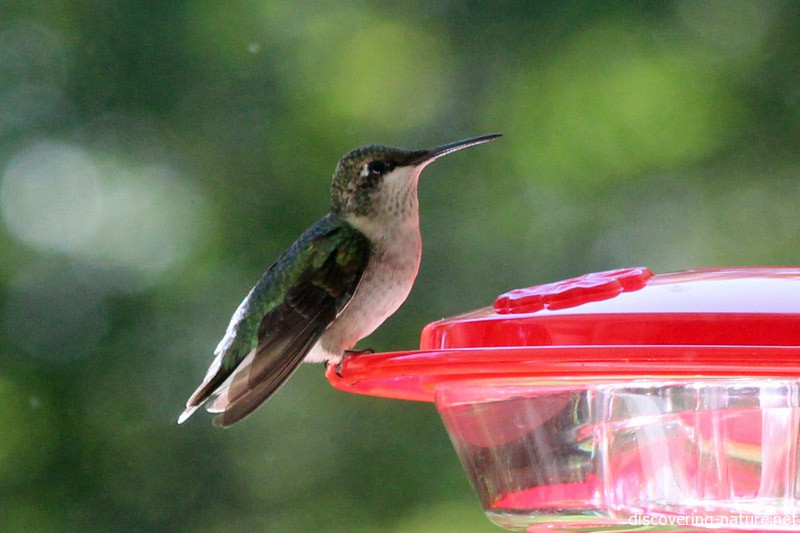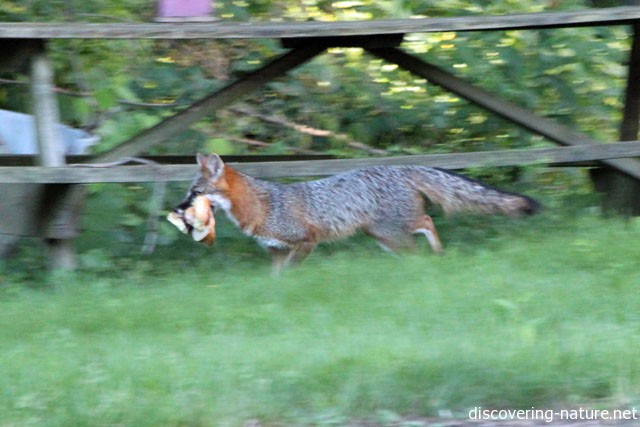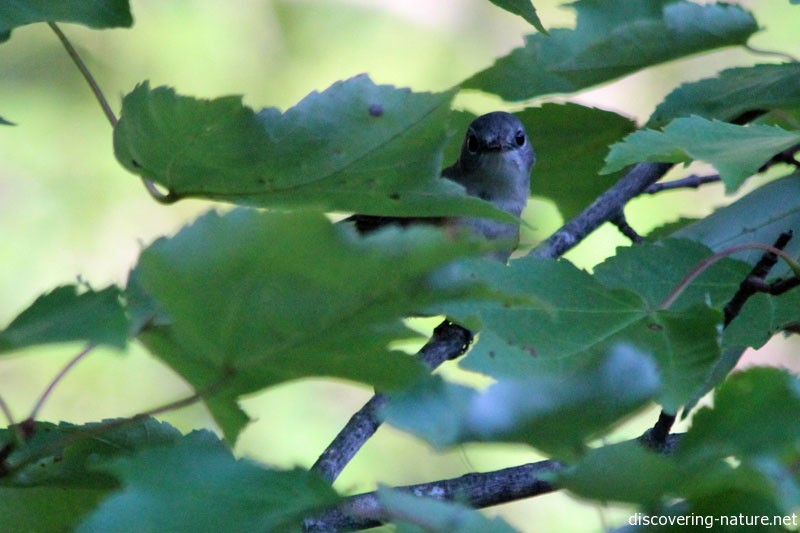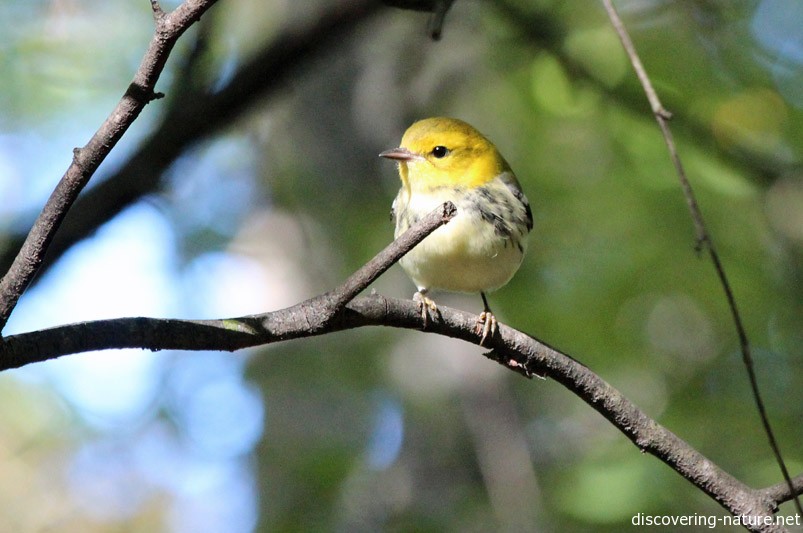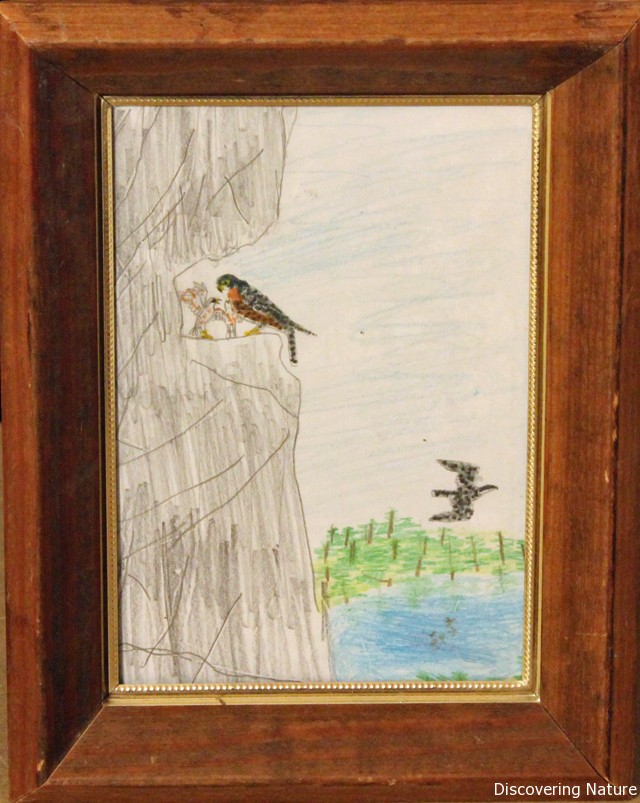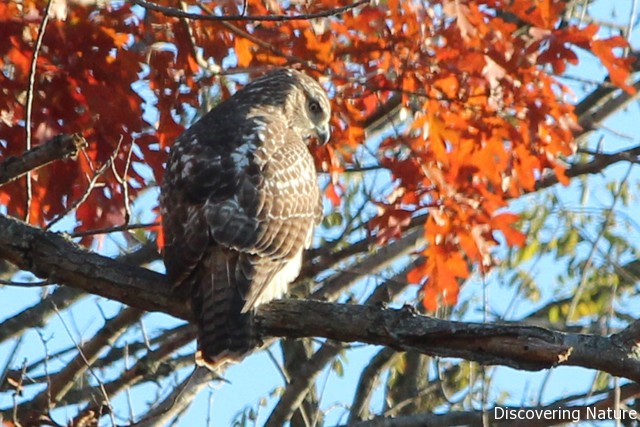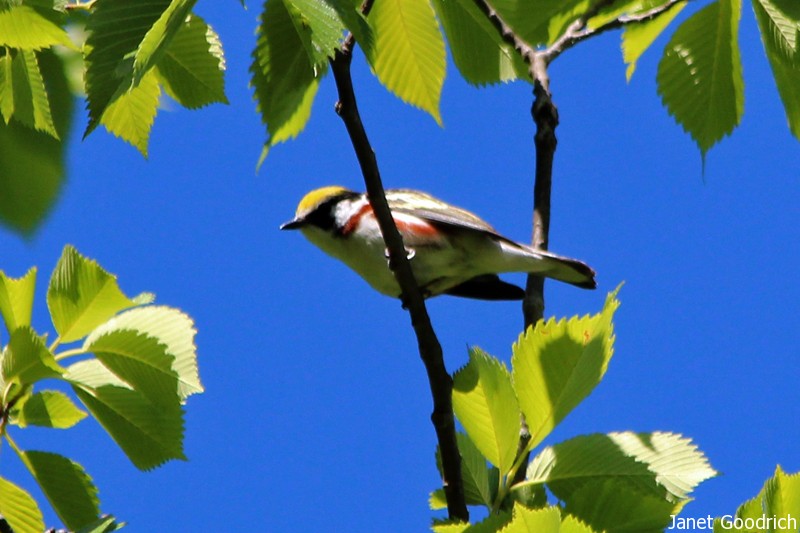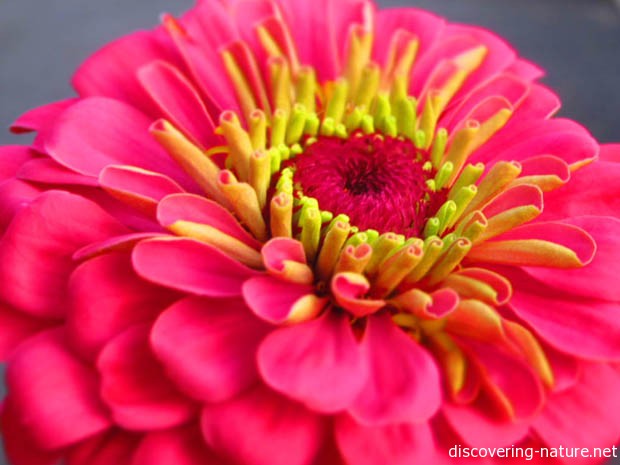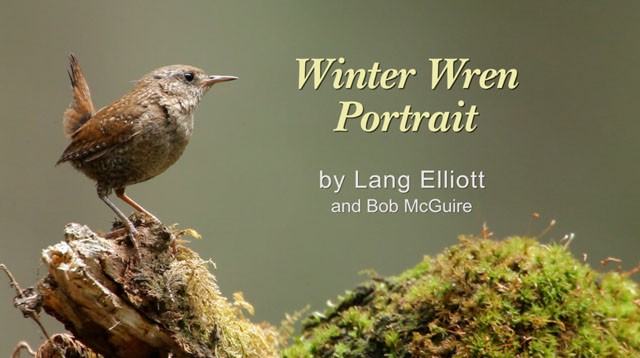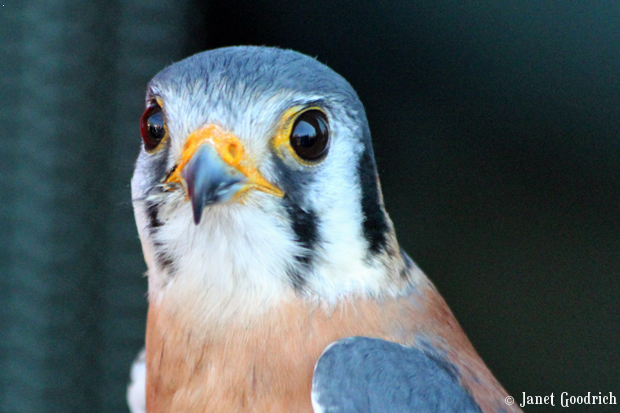Birds
-
Mrs. Junco

The light was poor, but I couldn’t help trying to get a photo of this junco nesting in the artificial wreath at church. She must handle stress well, as her home is right at the main entrance…
and she is perpetually watched by a fake bird almost exactly her size.

-
White hawk nesting

-
Ghost Story

We’ve been keeping an eye out for the leucistic redtail in our neck of the woods. Our sightings are fleeting, but we’ve accumulated enough of them to construct a narrative at this point.
Usually the hawk is far away, and she has a knack for choosing unphotographable areas. We call her Marley, after the ghost in A Christmas Carol, because of her whiteness. We think of her as female because she is larger than the more typically colored redtail we see her with.

See what I mean about unphotographable areas? Cropped in, though, you can see that this is a pair of hawks.

Lately, we’ve been seeing Marley near, and sometimes perched on, a nest.


So it looks like her story goes something like this so far: Marley has paired up with a male, and she is getting ready for nesting season. We’re not positive yet that she’s actively using it, but if so this is by far the most unusual nest we know of. We look forward to observing whatever we’re able to see over the next few months without scaring her away from her maternal duties.
-
Mrs Hummer
-
Random spring beauties
This flower is actually called “spring beauty.” Everything else in this post gets informally classed under the same heading… We’re drinking in the sights of the world waking up around here.
-
Spring phoebe
-
Leucistic Red-tail
We’ve seen this large, snowy white raptor several times nearby since around November.
Naturally, I’ve thought it was a snowy owl. Last year snowies were on everyone’s radar because it was an irruption year, and I figured this might be one of the surplus young who were born in the year of plentiful lemmings.
We saw it about a week ago being mobbed by crows, and it was so large, and so white, I thought again: snowy owl! But…
Yesterday it was sitting in and near an old red-tailed hawk’s nest, vocalizing like crazy, and I got a couple of better (or at least, closer!) pictures.
Clearly not a snowy owl!
I noticed several things. It was not an owl call; it was the classic red-tail’s scream. (Another hawk answered from farther away!) It didn’t have yellow eyes. It didn’t have feathered feet. And it just didn’t have the blunt owl body.
Could there be such a thing as an albino red-tail? Searching online, I discovered there could — though the word in this case is not albino, but leucistic — partially albino. The eyes, after all, are not red. And there are some dark accents in the feathers.
We were tickled to have a snowy owl, but we’re even more tickled to have a rare hawk. At first I was sad, thinking its chances of survival would be poor without the protective coloration. But it’s already survived the winter, so its survival skills are pretty good. There aren’t that many predators to worry about. And a dense leaf canopy would hide it well enough from prey below.
As for being chased by its own kind as an enemy, well — it surely did seem to be conversing with that second hawk, and perhaps readying the nest for breeding season. So we’ll see. There is at least this picture online of a leucistic red-tail on friendly terms with a more typical one, so I have hope.
My daughter named it Marley, after the ghost in A Christmas Carol.
-
Superbirds
It was minus 8 degrees this morning, but these beautiful, hardy little chickadees are briskly about their business. Such brave little birds.
What else can they do? Think how much they must have to eat to survive in these temps. They have no time to waste.
According to The Forest Unseen, chickadees have various adaptations to the cold. They grow 50% more feathers in winter (the original down jacket). They sometimes sleep huddled together in a “ball of birds.” And they search constantly for food with eyes that are lined with twice as many receptors as humans’:
On a winter day, the birds need up to 65,000 joules of energy to keep themselves alive. Half this energy is used to shiver. These abstract measures become more understandable when they are converted into the currency of bird food. A spider the size of a comma on this page contains just one joule. A spider that fits into a capitalized letter holds one hundred joules. A word-sized beetle has two hundred and fifty joules. An oily sunflower seed has more than one thousand joules…
One of the reasons we keep the feeders filled around here!
There’s something inspiring about these “common” little birds. If they can brave these cold days with every appearance of good cheer, so can I.
-
Raptors
We went to the Cornell Lab for their Migration Celebration today. It was pretty chilly for outdoor activities, but they had lots of fun exhibits and activities inside. Outdoors, we saw a bird banding demo as well as a number of raptors up close — including E3, the offspring of Big Red and Ezra that was injured, rescued, and rehabilitated at the Lab.
Here are just a few of the others.
Golden eagle.
American kestrel.
Falcon mix.
Merlin.
Eagle owl.
Harris hawk.
Barred owl.
And a very talkative great horned owl!
There were some other raptors as well — a spectacled owl and a screech owl, and perhaps some others after we left. They are all captive birds that can’t live in the wild, but you still get a glimpse of their beauty and ferocity.
-
Young eagle

